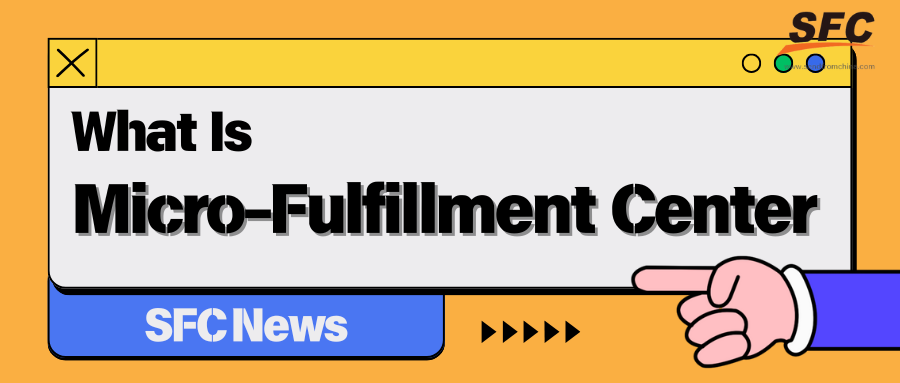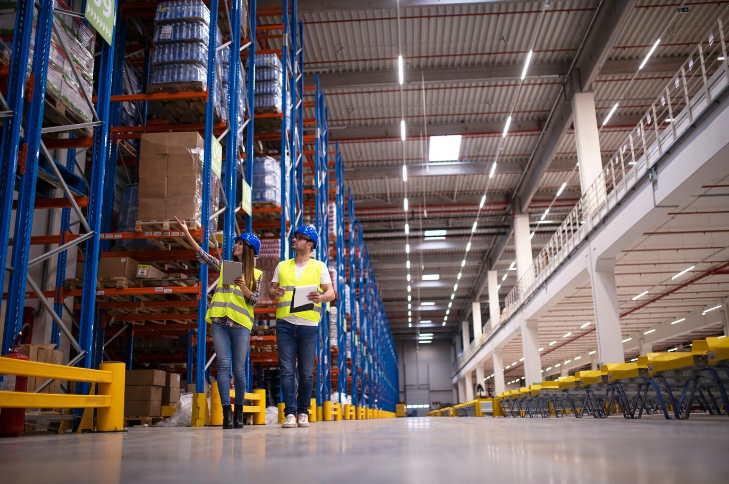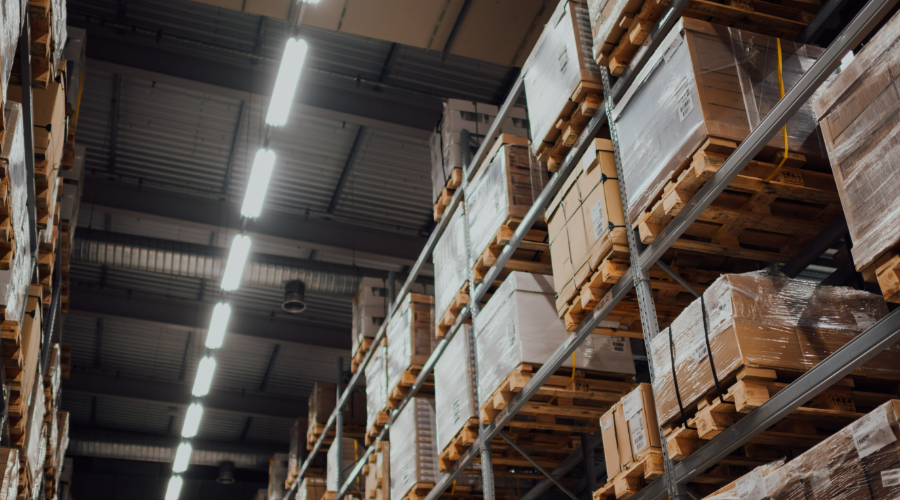Table of Contents
What Are Micro-Fulfillment Centers? Definition, Benefits, and Challenges
Time: Jan 14,2025 Author: SFC Source: www.sendfromchina.com
The logistics industry is evolving, and micro-fulfillment centers are leading the charge. These small, automated warehouses are designed to meet the growing consumer demand for faster delivery, especially in urban areas. By combining cutting-edge technology and strategic locations, they’re revolutionizing how businesses handle last-mile delivery. In this blog, we’ll explore what micro-fulfillment centers are, their benefits, challenges, and why they’re a game-changer for modern supply chains.
1. What Are Micro-Fulfillment Centers
Micro-fulfillment centers (MFCs) represent a transformative innovation in the logistics and supply chain industry. These compact, highly automated facilities are strategically located in urban or suburban areas to optimize last-mile delivery, ensuring products reach consumers faster and more efficiently. Unlike traditional fulfillment centers, which operate on a massive scale and are typically situated on the outskirts of metropolitan areas, MFCs are designed to serve local populations with precision and speed.By leveraging advanced robotics, artificial intelligence, and real-time data analytics, micro-fulfillment centers streamline the order fulfillment process. They are particularly suited for industries such as grocery delivery, e-commerce, and pharmaceuticals, where speed and accuracy are critical.
2. Benefits of Micro-Fulfillment Centers
Micro-fulfillment centers offer a range of benefits, particularly in the context of modern e-commerce and retail operations. These compact, automated MCFs are strategically located close to urban areas or customer hubs, enabling faster and more efficient order fulfillment. Below are some key advantages:Faster Delivery Times
MFCs allow retailers to store inventory closer to their customers, significantly reducing the time it takes to pick, pack, and ship orders. The proximity enables same-day or next-day delivery, which is increasingly becoming the standard expectation for consumers. By leveraging MFCs, businesses can provide quicker delivery services, enhancing customer satisfaction and competitiveness.Cost Efficiency
By reducing the distance products need to travel, MFCs help lower transportation costs. It is particularly important in last-mile delivery, which is often the most expensive segment of the supply chain. Furthermore, the use of automation within these centers reduces labor costs and improves operational efficiency, allowing businesses to process more orders with fewer resources.Increased Inventory Accuracy
MFCs often utilize advanced technologies like robotics and artificial intelligence to manage inventory. The systems improve inventory accuracy, minimize human error, and ensure that stock levels are optimized. It reduces instances of overstocking or stockouts, leading to better resource utilization and improved customer experiences.Space Optimization
Unlike traditional large-scale distribution centers, MFCs are designed to operate efficiently in smaller spaces. They can be set up in urban areas, unused retail locations, or even within existing stores. The adaptability makes them an ideal solution for businesses looking to optimize their real estate footprint without sacrificing operational capabilities.Scalability and Flexibility
MFCs offer a scalable solution for businesses, particularly in response to fluctuating demand. Retailers can establish multiple micro-fulfillment centers across different regions to better manage seasonal peaks or growing customer bases. The modular design of these centers also allows for easy expansion or reconfiguration as needs evolve.Enhanced Customer Experience
Faster delivery times, accurate inventory management, and reliable order fulfillment contribute to a superior customer experience. MFCs enable businesses to meet the demands of modern consumers, who expect seamless and efficient shopping experiences, both online and offline.3. Downsides of Micro-Fulfillment Centers

High Initial Investment
The setup costs for MFCs can be significant, particularly due to the automation technologies required to achieve high efficiency. Robotics, AI-powered inventory systems, and advanced software can be expensive to install and maintain. For smaller businesses or those with limited budgets, the initial investment may outweigh the benefits.Limited Storage Capacity
MFCs are designed to operate in smaller spaces, which inherently limits the amount of inventory they can store. It makes them less suitable for businesses with a wide product range or those that deal in bulky items. Insufficient storage capacity may lead to frequent restocking needs, increasing transportation and labor costs.Complexity of Integration
Integrating MFCs into existing supply chain operations can be complex. Businesses need to ensure seamless coordination between MFCs, larger distribution centers, and last-mile delivery networks. The technological and logistical challenges of this integration may require significant time and resources, as well as specialized expertise.Dependence on Automation
While automation is a key feature of MFCs, it also introduces risks. System failures, maintenance requirements, or software glitches can disrupt operations and lead to delays. Over-reliance on technology may leave businesses vulnerable to operational interruptions if backup systems or contingency plans are not in place.High Operational Costs in Urban Areas
MFCs are often located in urban centers to be closer to customers, but real estate and operational costs in these areas can be high. Rent, utilities, and local taxes may offset some of the cost savings gained through reduced transportation distances, particularly in densely populated cities with premium real estate prices.Challenges in Scaling
While MFCs are scalable in theory, expanding their network can be challenging. Setting up multiple MFCs requires careful planning, significant capital investment, and robust management systems. For businesses with fluctuating demand, this scaling process may be slower and more complicated than expecte.4. Micro-Fulfillment Centers vs Traditional Fulfillment Centers
Micro-fulfillment centers and traditional fulfillment centers (TFCs) serve similar purposes—facilitating order fulfillment and delivery—but they differ significantly in location, size, technology, and operational focus. Understanding these differences is essential for businesses deciding which model best suits their needs.Micro-Fulfillment Centers |
Traditional Fulfillment Centers | |
Location |
Urban/Suburban | Rural/Outskirts |
Size |
Compact | Large |
Delivery Time |
Same-day/One-hour | 1-3 Days |
Technology |
High Automation | Moderate Automation |
Storage Capacity |
Limited | Extensive |
Operational Focus |
Last-Mile Delivery | Bulk Processing |
5. Real-World Examples of Micro-Fulfillment Centers

Walmart’s Micro-Fulfillment Strategy
Walmart has embraced MFCs to enhance its grocery delivery services. By integrating small, automated centers into existing stores, Walmart has managed to reduce delivery times and improve order accuracy.Ocado’s Automated Warehouses
Ocado, a UK-based online grocery retailer, uses cutting-edge robotics in its MFCs to streamline order processing and delivery. Their technology has become a benchmark for efficiency in the industry.Amazon’s Urban Hubs
Amazon has developed urban fulfillment hubs to support its Prime Now service, ensuring rapid delivery of essential items to customers in metropolitan areas.6. Challenges of Micro-Fulfillment Centers
Micro-fulfillment centers (MFCs) offer numerous advantages, but they also face several challenges that businesses must address to maximize their efficiency and viability. These challenges arise from their reliance on technology, operational constraints, and integration requirements. Below are the key challenges of MFCs:1. High Initial Investment
Setting up an MFC requires significant capital expenditure. The cost of automation technology, robotics, software systems, and retrofitting urban spaces can be prohibitive, especially for small or mid-sized businesses. While the investment may pay off over time, the upfront costs can be a barrier to adoption.2. Limited Storage Capacity
MFCs operate in smaller spaces, which limits the volume and variety of inventory they can hold. It can make it difficult for businesses to stock a broad range of products, leading to frequent restocking needs and potentially higher logistics costs. Managing inventory turnover effectively is crucial but challenging in such constrained environments.3. Integration Complexity
Integrating MFCs into an existing supply chain can be complex. Businesses need to ensure seamless communication between MFCs, regional distribution centers, and last-mile delivery networks. Achieving this integration often requires advanced technology and expertise, which can increase costs and implementation time.4. Dependence on Automation
MFCs rely heavily on automation and robotics to achieve efficiency. While this reduces labor costs, it also creates a dependency on technology. System failures, software glitches, or maintenance issues can disrupt operations, potentially leading to delays and increased downtime.5. Urban Real Estate Costs
MFCs are typically located in urban areas to facilitate faster last-mile delivery. However, urban real estate is expensive, and the high cost of leasing or purchasing space can offset some of the operational efficiencies gained through proximity to customers.6. Workforce Challenges
Although MFCs require fewer workers than traditional fulfillment centers, they still need skilled technicians to operate and maintain advanced systems. Recruiting and retaining such talent can be challenging, especially in competitive job markets. Additionally, transitioning workers from manual roles to technology-focused positions may require extensive training.7. Conclusion
Micro-fulfillment centers are revolutionizing the way businesses handle logistics and meet customer expectations. By prioritizing speed, efficiency, and proximity to consumers, MFCs are paving the way for the future of e-commerce and retail.Whether you’re a business owner looking to optimize your operations or a curious consumer wondering how your favorite brands deliver so quickly, micro-fulfillment centers are undoubtedly a game-changer.
8. FAQs
1. How is a micro-fulfillment center different from a traditional warehouse?
MFCs are smaller, more automated, and located closer to urban areas. They focus on fulfilling online orders quickly, whereas traditional warehouses manage large-scale inventory storage and distribution.2. What industries benefit most from micro-fulfillment centers?
Retail, e-commerce, grocery, and healthcare industries are the primary beneficiaries of MFCs, as they require fast delivery solutions for time-sensitive products.3. Are micro-fulfillment centers replacing traditional warehouses?
Not entirely. MFCs complement traditional warehouses by handling rapid delivery needs, while larger warehouses continue to manage bulk inventory. Post Views:2231
Post Views:2231
Copyright statement: The copyright of this article belongs to the original author. Please indicate the source for reprinting.
Previous Post
How to Ship Alcohol? The Ultimate Guide
Next Post
After Fail: Why You Should Consider Relaunching Your Kickstarter Campaign
TAGS
Hot Research
Recent News
Get a Custom China Fulfillment Solution with FREE Storage for 30 Days
 Want to know about our services, fees or receive a custom quote?
Want to know about our services, fees or receive a custom quote?
 Please fill out the form on the right and we will get back to you within a business day.
Please fill out the form on the right and we will get back to you within a business day.
 The more information you provide, the better our initial response
will be.
The more information you provide, the better our initial response
will be.





 TAGS:
TAGS: